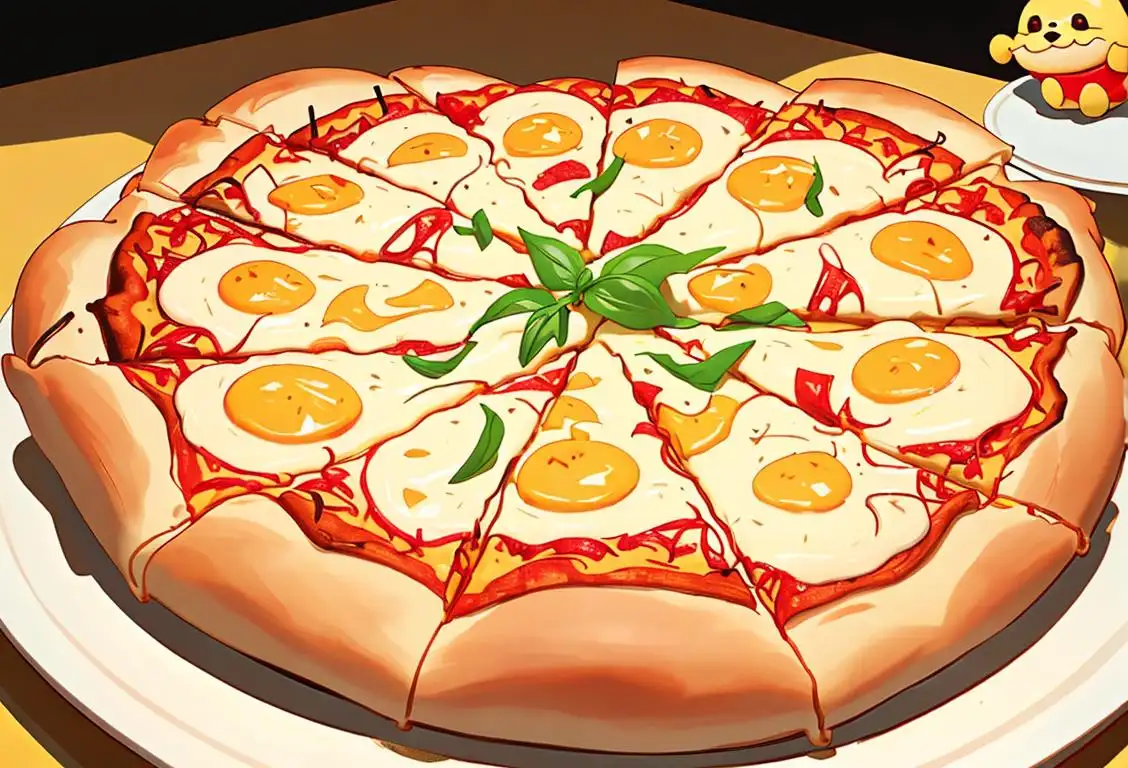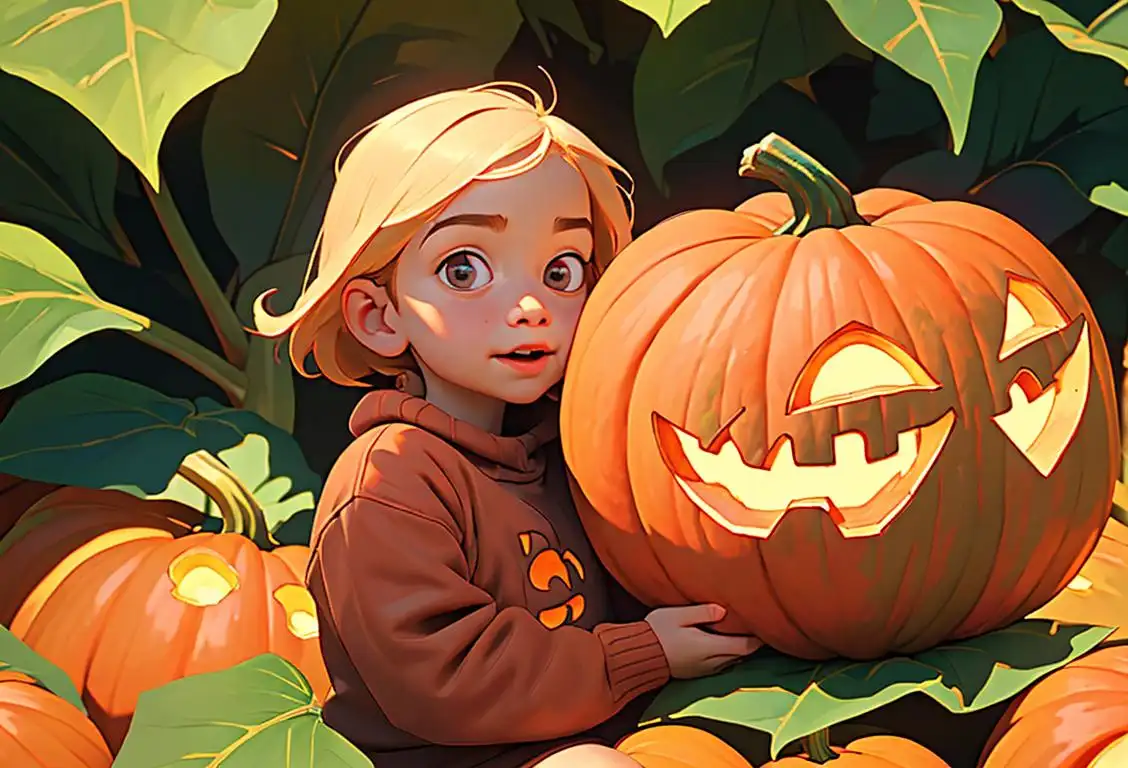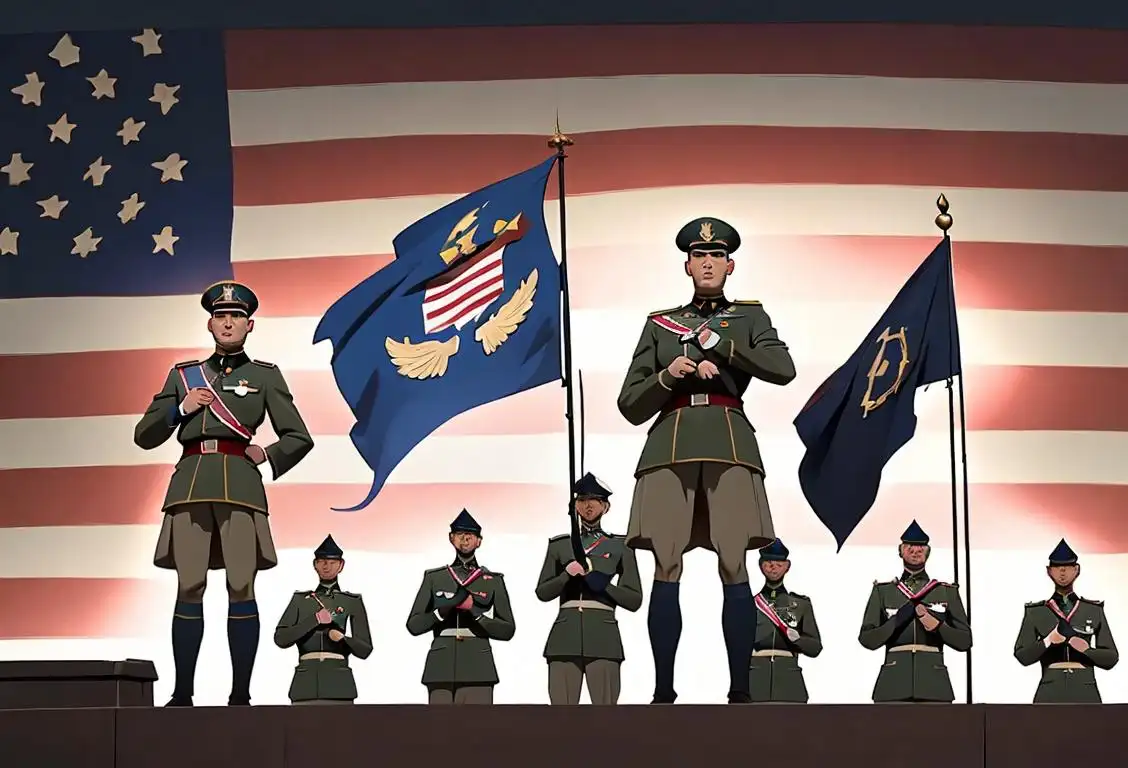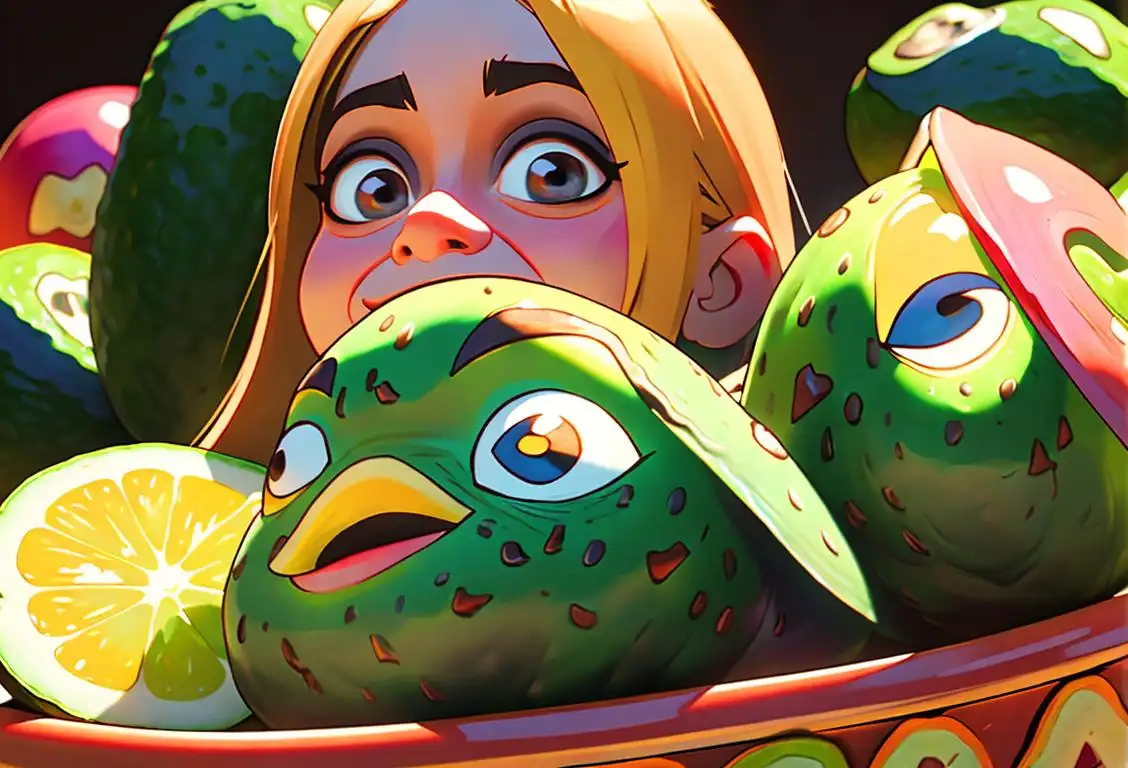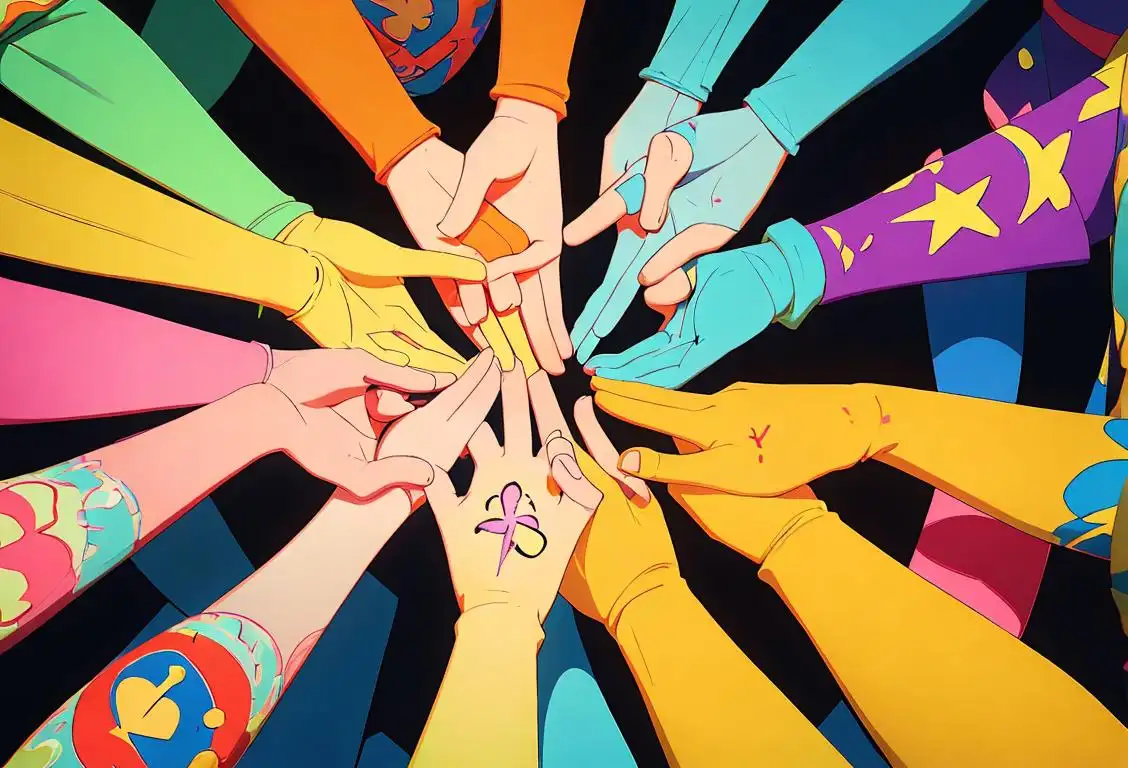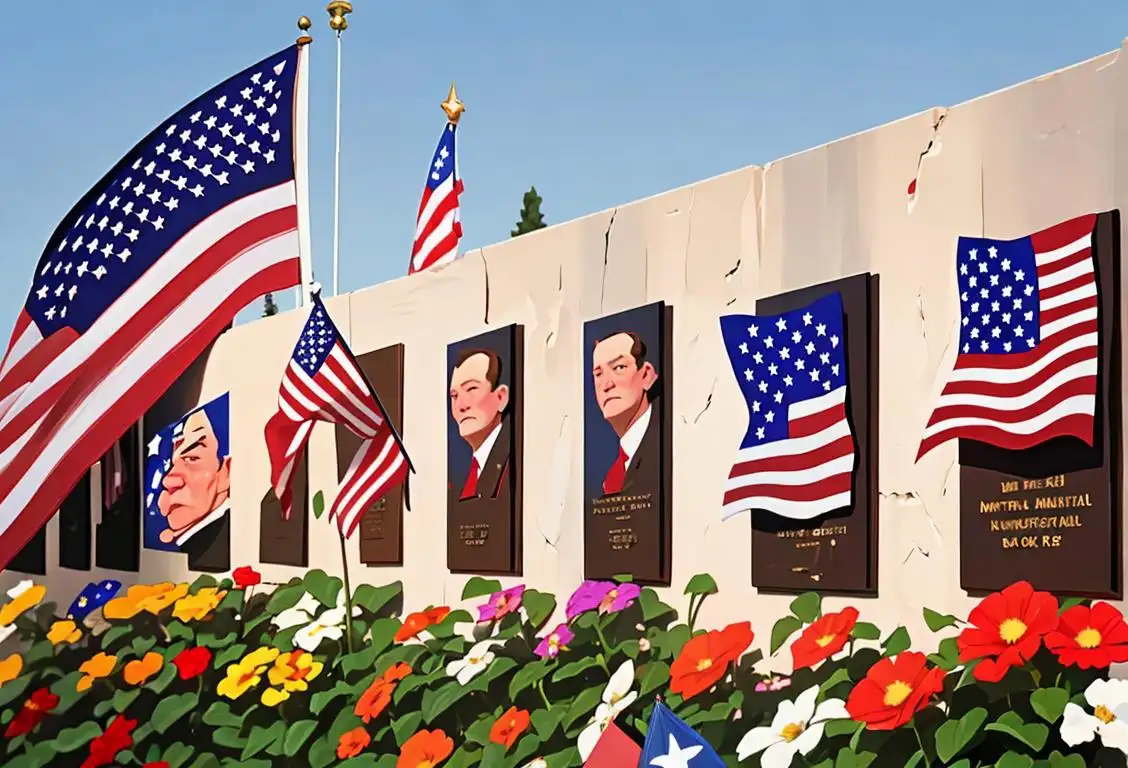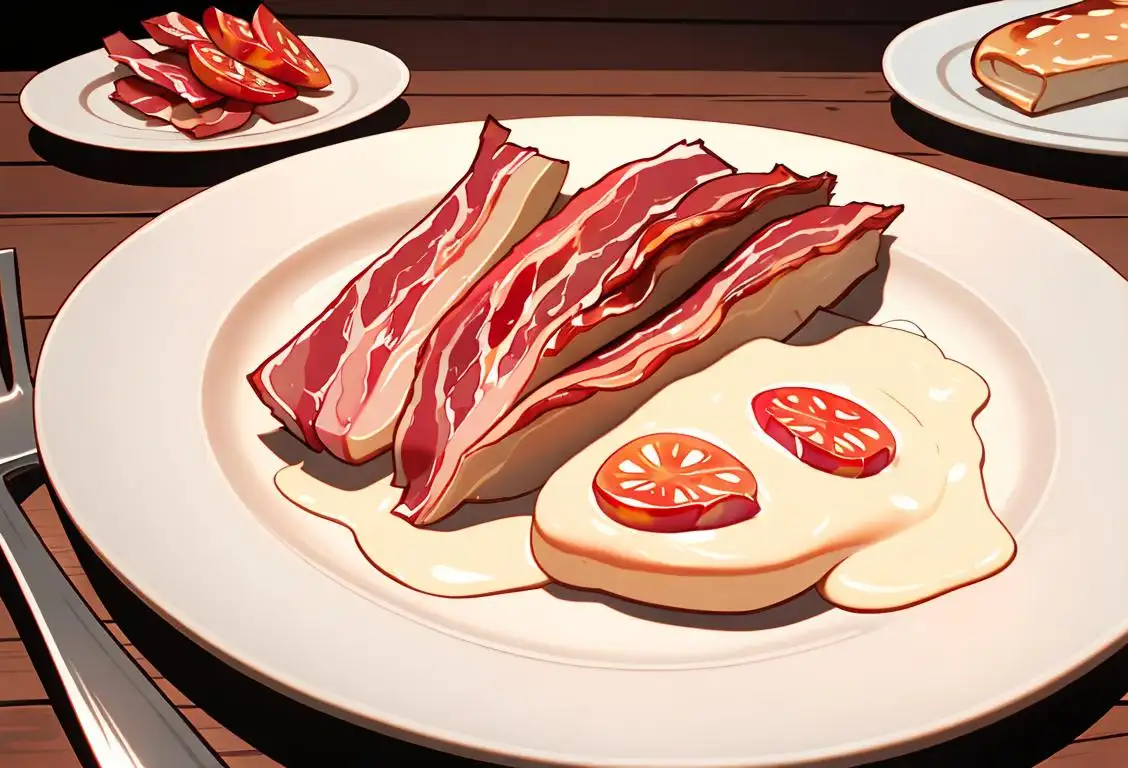National Mog Day
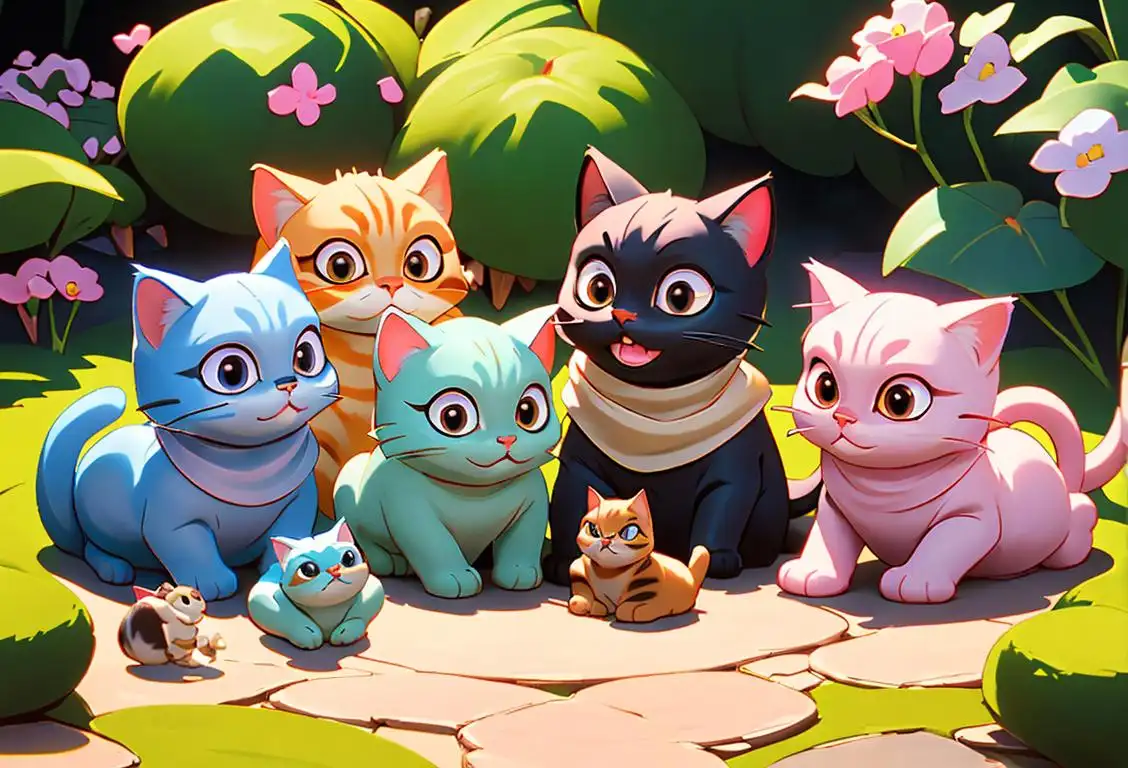
Welcome to the magical world of National Mog Day, where we honor our feline friends in all their majestic glory! On this special day, cat lovers from all over the globe come together to celebrate the companionship, grace, and mischievous antics of these adorable creatures. Get ready to embark on a purrfect journey of fun and feline appreciation!
When is Mog Day?
It's national mog day on the 27th August.
The Rise of the Mog
Before we dive into the internet history of National Mog Day, let's take a moment to appreciate the essence of a mog. For those who are not familiar, a 'mog' is a term coined to describe a mixed breed cat. These delightful creatures encompass a unique blend of different breeds, resulting in a delightful concoction of fur patterns, personalities, and quirks.
While purebred cats often steal the spotlight, National Mog Day is here to remind us that mogs deserve just as much love and admiration. These furry companions may not have a pedigree, but they make up for it with their undeniable charm and unending capacity for mischief!
The Internet Chronicles of National Mog Day
In the vast expanse of the internet, National Mog Day has found its place among cat enthusiasts and enthusiasts of all things adorable. What started as a small movement among cat lovers has spread like wildfire across social media platforms. From heartwarming cat videos to adorable mog memes, the internet has become a hub of mog-related content on this glorious day.
The first online mention of National Mog Day dates back to August 27th, 2015, when cat lovers worldwide united to share their love for mogs using the hashtag #NationalMogDay. Since then, this day has garnered more and more attention each year, with dedicated websites and social media pages popping up to celebrate the occasion.
Cat owners and enthusiasts alike use National Mog Day as an opportunity to share stories and pictures of their beloved mixed breed cats. It's a day of admiration, showcasing the beauty and uniqueness of these furry companions. From funny tales of mog mischief to heartwarming tales of loyalty, the internet buzzes with feline joy on National Mog Day.
Did You Know?
Did you know that the word 'mog' can also be used as a verb? It means to move quickly or clumsily, just like cats tend to do when they're playfully darting around the house. So next time you witness your mog doing zoomies around the living room, you can say they are 'mogging'!
History behind the term 'Mog'
1670
The Emergence of 'Mog'
The term 'mog' is believed to have originated in England in the 17th century. It was first used as a slang word, mainly among thieves and criminals, to refer to a stolen item or loot. Back then, 'mog' was used as a noun to describe something valuable that was taken or acquired through illicit means. The exact etymology of the word remains uncertain, but it quickly gained popularity within certain circles.
19th century
Animal name merges with street slang.
In the 19th century, the term 'mog' emerged as a combination of two different elements. The first element comes from the British slang term 'moggie', which was commonly used to refer to cats. The second element stems from street slang in London, where 'mog' referred to a low-class person or a fool.
1904
The Birth of Mog
The term 'mog' was first used in the year 1904. It originated as a slang term in America and was primarily associated with jazz musicians. Initially, 'mog' was used to describe someone who played music in a lively and skillful manner, especially on the piano.
12th century
Origins of the term 'mog'
The term 'mog' has its roots in Middle English, where it was first used in the 12th century. Originally, it was derived from the word 'mogger,' which meant to trifle or play at something. Over time, the term 'mog' evolved and began to encompass a wider range of meanings, including a person who is small or insignificant.
1769
The Birth of the Word
The term 'mog' first appeared in English in 1769 as a slang word used to describe a 'penny', particularly a counterfeit coin. It is believed to have originated from the Romani word 'moggi', meaning 'fake' or 'counterfeit'. The term quickly entered colloquial usage and became a popular slang term among thieves and con artists of the time.
1969
Inception of a Legendary Term
The term 'mog' first appeared in 1969, in the British children's TV show 'The Doonican Family'. The character 'Mog' was a friendly and lovable stuffed toy dog that quickly became a beloved member of the Doonican household. Children all over the UK adored Mog, making the term popular among the young audience.
1950
Origin in Oxford English Dictionary
The term 'mog' originated in 1950 and was first listed in the Oxford English Dictionary as a noun. It is believed to have derived from the shortened form of the word 'mongrel'. In this context, 'mog' referred to a mixed-breed dog, specifically those of indeterminate or unknown origin.
1980s
Early Video Game Terminology
During the 1980s, the term 'mog' emerged as a popular slang term in the video game community. It originated from the phrase 'multiple objects game' which referred to video games that involved interacting with multiple objects or non-player characters (NPCs) within the game world. Gamers started using 'mog' as a shorthand term to describe these types of games, and it quickly caught on.
1922
The Birth of Mog
The term 'mog' first emerged in the year 1922. It originated from British slang and was primarily used as a mild derogatory term to refer to an unattractive or unimportant person. The exact etymology of 'mog' is uncertain, but it is believed to have derived from the word 'moggie,' which was colloquial for a shabby or stray cat.
1960s
Mog Takes on a New Meaning
During the 1960s, the term 'mog' started to gain popularity in the United States, particularly within African American communities. It underwent a subtle shift in meaning, becoming a term of endearment or camaraderie among friends. The word gradually evolved into a term used to denote a buddy or a close companion.
1971
Expansion Beyond Television
After the success of 'The Doonican Family', the term 'mog' started to gain popularity beyond the TV show. It became a common word used by children to refer to their own stuffed animals or toys. The term became synonymous with beloved and cherished playthings, evoking a sense of comfort and nostalgia.
Early 20th century
Mog becomes shorthand for Moss Bros.
In the early 20th century, 'mog' took on another meaning when it became a popular shorthand term for Moss Bros., a well-known British clothing retailer specializing in formal wear. The abbreviation 'mog' was used by customers and employees alike, making it a familiar term within the company.
1845
Expanding to Deception
During the mid-19th century, the term 'mog' expanded its meaning to encompass deceit and trickery in a broader sense. It became commonly used to refer to a person who is dishonest, cunning, or manipulative. The association with counterfeit currency likely contributed to its association with deception.
1807
Widening of the Slang Usage
By the early 19th century, the term 'mog' had started to enter more common usage. It expanded beyond the realm of thieves and began to be used as a general slang term among the working class in England. The term came to be associated with something stylish, attractive, or high-quality. It was often used to describe a person who was well-dressed or someone who possessed a certain charisma. This wider usage helped 'mog' gain traction and become a part of everyday vocabulary.
1920s
Mog becomes synonymous with a cat
In the 1920s, the term 'mog' took a new direction and became associated with cats. British slang popularized the term to refer to a mongrel cat, combining the words 'mongrel' and 'dog.' This playful and colloquial use of 'mog' became widely recognized and added a new dimension to the term's cultural impact.
19th century
Shift towards British slang
During the 19th century, 'mog' underwent a significant transformation and became more associated with British slang. It started to be used to refer to a cat or a kitten. This particular usage gained popularity and became firmly ingrained in British colloquial language, eventually leading to the association of 'mog' with feline creatures.
1959
Popularity in British slang
By the late 1950s, 'mog' started gaining popularity as a slang term in British English. It expanded its usage beyond just referring to mixed-breed dogs and began being used more broadly to describe anything messy, untidy, or disheveled. For example, people started using the phrase 'a bit of a mog' to describe someone who appeared unkempt or scruffy.
1990s
Role-Playing Games (RPGs)
In the 1990s, the term 'mog' started to become associated specifically with role-playing games (RPGs). RPGs often feature large, immersive worlds with numerous characters, creatures, and items to interact with. Players would refer to these games as 'mogs' when discussing them, highlighting the importance of multiple objects and interactions within the game.
1964
Positive connotation: Moggy
In 1964, the term 'mog' took on a more positive connotation when it evolved into 'moggy'. 'Moggy' became a popular term in the United Kingdom to affectionately refer to domestic cats, particularly those without a specific pedigree. This endearing nickname highlights the lovable and often quirky nature of pet cats.
20th century
The legendary Mogwai
In the 20th century, the term 'mog' gained further prominence and recognition with the release of the iconic film 'Gremlins' in 1984. The movie introduced the world to the adorable yet mischievous creature called Mogwai. These fictional creatures had a significant cultural impact, and their name became synonymous with 'mog.' They became beloved by audiences worldwide, solidifying the term's association with cute and small creatures.
Early 20th Century
From Individual to Collective
In the early 20th century, the term 'mog' underwent a transformation in meaning. It shifted from being primarily used to describe an individual engaging in deceptive behavior to a collective term for a group of such individuals. It came to refer to a gang or a band of tricksters, often involved in various forms of criminal activities. This shift highlighted the societal perception of 'mogs' as organized groups of fraudsters.
Early 2000s
Massively Multiplayer Online Games (MMOs)
With the rise of massively multiplayer online games (MMOs) in the early 2000s, the term 'mog' took on a new meaning. MMOs allowed thousands of players to interact within a shared virtual world. Players began using 'mog' as an abbreviation for 'massive online game' or 'massively multiplayer online game,' to describe these expansive virtual worlds that were filled with countless objects, quests, and other players to interact with.
1930s
Mog enters the literary world
During the 1930s, the term 'mog' achieved further popularity with the introduction of a famous fictional cat. British author T.S. Eliot created a character named 'Old Deuteronomy' in his book 'Old Possum's Book of Practical Cats.' 'Old Deuteronomy,' often shortened to 'Old Deut,' was nicknamed 'Mog' by the other cats. This endearing and memorable character cemented 'mog' as a term associated with feline charm.
1960
Moto Guzzi introduces the V7 MOTO GUZZI!
In the motorcycle world, the term 'mog' gained even more recognition in 1960 with the introduction of the V7 MOTO GUZZI. This iconic motorcycle from the Italian manufacturer Moto Guzzi became affectionately known as the 'V7 Mog' due to its distinct engine configuration and the nickname caught on among motorcycle enthusiasts.
1983
Mog the Forgetful Cat
In 1983, author and illustrator Judith Kerr introduced a new 'Mog' to the world with her children's book series, 'Mog the Forgetful Cat'. The books center around Mog, a lovable and forgetful family cat. The character and series became immensely popular, cementing the term 'mog' as a symbol of affection and endearment for cats.
1940s
Mog as a Nickname for Cats
In the 1940s, the term 'mog' took on a new meaning and became associated with cats. It started as a nickname for a common or mixed-breed cat, derived from the word 'mongrel.' 'Mog' was used affectionately to refer to ordinary cats, without pedigree or distinction. This usage gained popularity in the UK and eventually spread to other English-speaking countries, where 'mog' continues to be used as a term of endearment for cats of any breed or origin.
1990s
Mog Goes Mainstream
In the 1990s, the term 'mog' crossed over into mainstream culture and gained broader recognition. It began to appear in popular media, including movies, television shows, and music. This exposure further reinforced 'mog' as a friendly way to refer to a friend, often highlighting the bond between individuals or celebrating a sense of solidarity within a group.
1992
Mogwai and the Gremlins
The term 'mog' found its way into popular culture once again in 1992 with the release of the iconic film 'Gremlins'. In the movie, the adorable creature that eventually turns into a mischievous gremlin is called 'Mogwai'. This association further solidified the term 'mog' as a symbol for lovable and quirky fictional creatures.
1991
Influence on literature
The influence of the term 'moggy' extended beyond everyday conversation and found its way into literature. In 1991, British author Judith Kerr published 'Mog the Forgetful Cat,' the first in a beloved series of children's books featuring a lovable and forgetful cat named Mog. The stories captivated young readers and cemented the term 'moggy' in popular culture as a delightful synonym for a feline companion.
1990s
Mog as an Internet Term
With the rise of the internet and online communities in the 1990s, the term 'mog' found a new lease of life in the digital realm. It became a popular abbreviation for 'Member of the Group' or 'Member of the Game.' It was commonly used in forums, chat rooms, and online gaming communities to refer to someone who was part of a specific group or game. This modern-day usage of 'mog' demonstrates its ability to adapt and evolve with changing cultural contexts.
Present day
Modern usage and cultural references
In modern times, 'mog' has retained its associations with cats, kittens, and small creatures. It is commonly used as a friendly term to refer to these animals, often conveying a sense of cuteness and playfulness. Additionally, 'mog' has also become a popular nickname for people with the initials 'M.O.G.,' further expanding its usage and cultural impact.
1960s
Transition to Media and Pop Culture
With the rise of media and popular culture in the 1960s, the term 'mog' took on new significance. It became synonymous with fictional characters portrayed as clever or sly, often with a humorous or mischievous twist. The term 'mog' was used to describe cunning thieves, con artists, or playful tricksters in various forms of entertainment, including literature, films, and TV shows.
Present
Mog in Modern Context
Today, 'mog' has become a widely used term in various subcultures and communities, transcending race and geography. It has found a place in the lexicon of contemporary slang and social media. 'Mog' is often employed in online conversations to express camaraderie, acknowledge mutual respect, or simply as a term of affection between friends. Its versatility and positive connotations have solidified its place in modern-day language.
1990s
Mog: A lovable fictional character.
The 1990s brought a new wave of popularity for the term 'mog' when the children's book 'Meg Mog and Og' was released. This book series, written and illustrated by Helen Nicoll and Jan Pienkowski, featured a lovable and mischievous cat named Mog. The endearing character Mog quickly won the hearts of both children and adults, leading to a resurgence in the use of the term 'mog' as a term of endearment for cats.
1967
Mog takes on animated life
The adorable and mischievous 'Mog' found its way into the animated world in 1967. Judith Kerr, a British author and illustrator, created a beloved children's book character named 'Mog.' The books and subsequent animated adaptations followed the adventures of a lovable cat named 'Mog,' captivating the hearts of both children and adults.
Present Day
Generalized Term for Complexity and Immersion
Today, the term 'mog' has evolved to become a generalized term for any game or virtual experience that offers a high level of complexity, immersion, and interactivity. It is used to describe games that provide players with a vast array of objects, characters, and systems to engage with, leading to rich gameplay experiences. Whether referring to RPGs, MMOs, or other genres, 'mog' has become a recognizable term among gamers to signify a deep and immersive gaming experience.
2005
Mogwai and Post-Rock Music
In the early 2000s, the term 'mog' took on a new meaning within the music scene. The Scottish post-rock band 'Mogwai' gained significant popularity with their mesmerizing instrumental compositions. Their unique sound and atmospheric music led to the term 'mog' being associated with a sense of introspection, beauty, and a sonic journey.
1990s
Internet Memes popularize Mog
With the rise of the internet in the 1990s, the term 'mog' took on a new form in the world of memes. 'Mog' became synonymous with a majestic and confident cat, often portrayed in humorous or absurd situations. These memorable images and videos spread rapidly across the web, making 'mog' a popular slang term among internet users.
21st Century
Digital Era Adoption
In the 21st century, the term 'mog' expanded its reach to encompass a new context in the digital world. It has been embraced by internet culture and online communities to refer to individuals who have a high level of expertise or mastery in a particular field. This usage portrays 'mogs' as skilled and knowledgeable individuals within their domain, evoking a sense of admiration and respect.
Present day
Mog: Internet slang for men of genius.
In the present day, 'mog' has taken on a new meaning within internet slang. It now stands for 'men of genius' and is used to praise or acknowledge someone's intelligence or expertise in a particular field. This slang term has gained popularity in online communities and serves as a way to celebrate intellectual prowess.
Present Day
Continued colloquial and literary use
To this day, the term 'mog' and its derivative 'moggy' continue to be used in casual conversations, particularly in the United Kingdom. It remains a friendly and endearing way to refer to mixed-breed dogs and domestic cats without specific pedigrees. The term's cultural impact is evident not only in everyday language but also in its influence on popular literature.
Present Day
Mog's Influence Today
Today, 'mog' remains a widely recognized term associated with both music and cats. It symbolizes skill, charisma, and feline charm. From its jazz origins to its prominence in literature, animation, and internet culture, 'mog' has left an indelible mark on popular language and continues to captivate people's imaginations.
Present
Continued Endearment and Popularity
In the present day, the term 'mog' continues to be used as an affectionate and endearing term that spans various cultural references. It represents everything from beloved childhood toys to adorable fictional creatures and even carries connotations of artistic expression. The term 'mog' remains a heartwarming and versatile word that resonates with people of all ages.
Did you know?
Did you know that the word 'mog' can also be used as a verb? It means to move quickly or clumsily, just like cats tend to do when they're playfully darting around the house. So next time you witness your mog doing zoomies around the living room, you can say they are 'mogging'!Tagged
awareness fun loved onesFirst identified
27th August 2015Most mentioned on
27th August 2015Total mentions
9Other days
Compliment Day
Cheese Pizza Day
Pumpkin Day
Medal Of Honor Day
Guac Day
Foundation Day
Suicide Prevention Day
Memorial Day
Cancer Survivors Day
Bacon Day

